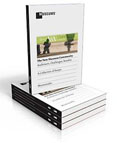
The New Museum Community: Audiences, Challenges, Benefits is a collection of 20 essays that 'examines in depth how museums globally are succeeding, in many different ways, in reaching and involving social groups traditionally overlooked or excluded from the museum experience'. The essays are broad in their content, touching on social media, migrants, asylum seekers, people with disabilities, outreach, elitism, and more. Many of the contributors have a background in education and learning, whether in cultural institutions or universities. All seem to have a particular interest in museum audiences. Most use institutions located in either the United States or the United Kingdom for their case studies.
The essays, comprising case studies, personal research projects and reports, are not organised in any particular way. They are easy to read and conceptually diverse. But many lack an argument, presenting research findings without significant analysis. There is a strong focus on British and American policy and practices, with some overlap in content, such as the British government's definition of social inclusion, which is quoted in two of the essays. As government policies differ substantially from one country to another, I found some of the discussions irrelevant in an Australian context. In some instances the article was published before the relevant research was completed, leaving an unfinished feel to some case studies. In 'Learning from autism', Lenore Alder presents an interesting program for 12- to 19-year-old autistic youths; but unfortunately elements of the program that included an overnight stay had not been completed at the time of publishing.
The standout for me was 'The ignorant museum: Transforming the elitist museum into an inclusive learning place', by Yuha Jung. Rather than presenting a case study, Jung presents an interpretation of two ideas: the first, from Paulo Freire's book Pedagogy of the Oppressed (1970); the second, from Jacques Rancière's The Ignorant Schoolmaster: Five Lessons in Intellectual Emancipation (1991), which together, Jung argues, can 'change museums into communicative, welcoming learning places' (p. 280).
Jung uses Freire's oppressed–oppressor binary to explore the unequal relationship set up by many museums between themselves and their visitors. Jung argues that, by positioning the museums' function in a traditional sense, that is, as relating primarily to the preservation and expansion of collections, and focusing on the aesthetic or historic value of objects, many museums 'risk neglecting their role as educational institutions'. By presenting objects in a single, monolithic way, museums ignore visitors' own experience and knowledge, which may alienate some, making them relevant and accessible to only a few. Thus the museum becomes an oppressor, 'as it imposes its rarefied beliefs and knowledge upon its visitors and shuts many out from deeper participation' (p. 273).
In order to try and transform this 'historically-influenced museum discourse into one which is more inclusive' (p. 277), Jung argues that museums should adopt the ideas of Rancière, who advocates emancipatory education and the use of a more communicative and horizontal approach. In order to do this, museums can adopt Rancière's 'method of the will', which allows visitors to become 'learning agents, capable of using their own intelligence in stimulating ways' (p. 83). Museums in turn must 'prepare a learning environment where visitors are invited to interpret knowledge in ways that are relevant to their lives' (p. 283).
In order to incorporate these two theories, Jung argues that museum professionals should adopt 'an ecological mindset'. This approach 'involves seeing the world with a holistic view and treating individuals not as basic social units but, rather, as part of the natural world' (p. 284). Jung goes on to argue that this perspective 'contrasts sharply with the historically dominant Eurocentric mind-set in the current education system, which embraces the human/nature dichotomy and anthropocentric view of community as a collection of autonomous individuals' (p. 284).
To implement these transformations museums must consult and communicate with their audiences. Jung also advocates for the neutralisation of traditional hierarchical staffing structures and a rethinking of the role of museums as genuine places of learning, rather than as depositories of art, history, and knowledge.
In their back cover blurb, the publishers claim that this book 'will act as an invaluable and inspiring guide for any museum, gallery or cultural organisation — large or small — intent on engaging the broadest possible audience'. The book as a whole does not live up to this expectation. While museum specialists may find individual essays interesting and helpful to their professional practice, as a collection the book does not work. The book is devoid of any kind of organisational tools — it contains no identified parts, merely an unconnected series of essays. It lacks cohesiveness and reads like a series of short, unrelated conference papers, although there is no evidence in the publishing details to suggest that this is what they are. There is no logical grouping of the essays, no abstracts, and no introduction or conclusion. The book would greatly benefit from an editor to sort and organise the essays into a more cohesive set.
Nonetheless, this collection of essays presents a wide range of research currently being undertaken in museum settings around the world. For museum professionals who work with diverse audiences, including school children, underprivileged youth, immigrants and asylum seekers, and visitors with disabilities and special needs; or for those who are interested in the development of new audiences through marketing strategies and audience research, this book has much to offer. While few people are likely to read it from cover to cover, museum professionals are likely to see it as a useful reference tool.
